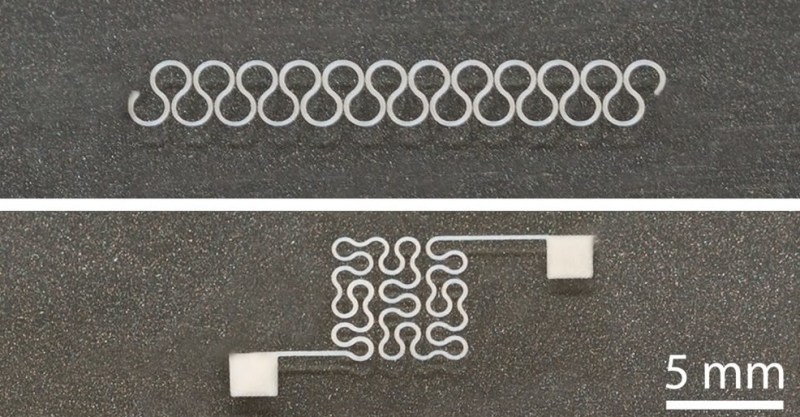While our bodies are pretty amazing, their dynamic nature makes integrating circuits into our clothing a frustrating process. Squaring up against this challenge, a team of researchers from North Carolina State University have hit upon a potential boon for wearable electronics: silver nanowires capable of being printed on flexible, stretchy substrates.
It helps that the properties of silver nanowires lend themselves to the needs of wearable circuits — flexible and springy in their own right — but are not without complications. Silver nanowires tend to clog print nozzles during printing, so the research team enlarged the nozzle and suspended the nanowires in a water-soluble solvent, dramatically cutting the chance of clogging. Normally this would have a negative impact on precision, but the team employed electrostatic force to draw the ink to the desired location and maintain print resolution. Once printed, the solvent is rinsed away and the wearable circuit is ready for use.
By controlling print parameters — such as ink viscosity and concentration — the team are able to print on a wide variety of materials. Successful prototypes thus far include a glove with an integrated heating circuit and an electrocardiograph electrode, but otherwise the size of the printer is the only factor limiting the scale of the print. Until this technique becomes more widely available, interested parties might have to put their stock into more homebrew methods.
[Thanks for the tip, Qes!]















Could this technique be used to make PCBs? Place the components on a suitable substrate, and then glue the nano wires onto the components/ substrate? Very exciting possibilities here…
This is a truly exciting work! I think Ag nanowires are really suitable for this application.
As to the integration of Nanowires on PCBs, you can take a look to our work:
https://www.sciencedirect.com/science/article/pii/S2211285518300375
Here we integrated record ZnO nanowires onto flexible PCBs.
Kind regards,
Giuseppe Arrabito
Definitely printable electronics is an exciting space to be in right now. I think it could eventually democratize integrated circuit prototyping and manufacturing the way 3D-printing has done for the mechanical domain.
Haaahahahhahahahaaahahahhahahahahaa
Will I turn blue if I wear it?
Smart mechanical design. I used to have a pair of the I think aluminumized thread gloves and socks that were developed by NASA supposedly. I don’t think I have them still… though would be interesting to see and measure conductivity with. Seems that same type method can be applied to silverized thread for I’d guess ribbon like to stitch in or maybe smaller wound thread. Be interesting to do some patent searches. Gold might not tarnish like silver however. The reference article is interesting still as there may be other applications as just looking at seems like touch sensors and more.
This stuff has been talked about for years. It’s just grant grubbing.
Think about it; would you really want your t shirt to cost eight hundred dollars and be a cell phone!?
I’ve said it for years; that the idea of “wearable electronics”, aside from extremely simple applications like skin contacts for heart rate monitoring, is imbecilic.
Every couple of months for the past decade a paper has come out with eight Chinese authors who are working at American universities taking about flexible displays, or sprayable nano baterry paint, or optical metamaterial invisibility cloaks in the microwave region.
These are not good ideas and they aren’t even effective at advancing technology. I think their main purpose is to make students and researchers money.